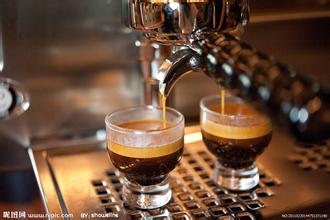Flavor description of Arabica Coffee introduction of varieties produced by grinding scale
Flavor description of Arabica Coffee introduction of varieties produced by grinding scale
Bourbon is almost all round beans, beans are a little smaller than tin card, ripening later, but the yield is 30% more than tin card. It is suitable for growing above 1200 meters above sea level, and its flavor is obviously more prominent than those below 1000 meters, but bourbon has a disadvantage that it will rest for a year as a result. Round bourbon is full of vitality, and its resistance to rust leaf disease is better than that of iron pickup, but its flavor is as good as it, or even better.
In 1810, some of the round beans in Bourbon Island mutated into pointed beans, which is known as the "pointed bourbon". It is characterized by a caffeine content of only half, low output, weak physique, and extremely rare, just like a weak aristocratic teenager.
There are also many varieties of coffee. First of all, the two most common varieties are Arabica and Robusta!
The coffee beans on the market, unless there is coffee specially grown by Robusta, no matter what name you encounter, such as Yega Sheffield, Mantenin, Columbia, etc., all belong to the subline or native varieties under the Arabica variety.
As for why it is called Manning and Yejasuefi, it has something to do with the way it is named: in the case of Yegashafi, it is a small town in Ethiopia, so the coffee produced in this town is named Yegasuefi. There will also be different small producing areas and estates or cooperatives in the town. For example, there is a place called Kochel and a cooperative called the Rico Cooperative. Most of the coffee they produce is native to Arabica, so we can call this coffee: the native species of the Rico cooperative in the Yega Fischer producing area of Ethiopia.
1. Make sure you don't have the equipment to make coffee. You can buy a French pressure kettle (available at Starbucks). That one is the simplest and tastes good. 2. Tell the Starbucks clerk about your equipment and ask him to grind it for you. It is recommended to grind it one week at a time, otherwise it is easy to get damp. 3, according to the instructions, use the coffee utensils you bought to brew. If it is legal pressure, put the powder directly in it, and inject about 97 degrees (that is, just boil for a while) in the proportion of 10 grams of powder: 180 milliliters of water (do not press down the strainer). After 4 minutes, press down the strainer and pour it out to drink. If it is too strong, you can finally add water to dilute it, but do not change the ratio of coffee to water.
I hope I can help you.

Important Notice :
前街咖啡 FrontStreet Coffee has moved to new addredd:
FrontStreet Coffee Address: 315,Donghua East Road,GuangZhou
Tel:020 38364473
- Prev

Taste characteristics of Tiebika Coffee Grinding scale in Manor production area
Taste characteristics of Tiebika Coffee 1. Varieties and characteristics of Yunnan Coffee at present, the varieties commonly cultivated in Yunnan are Cartimo 7963 (Catimor), Cartimo P series, Bourbon and Bobang varieties (boubon), Tibika and Tibika varieties (typica). According to my long-term baking practice, we are interested in these commonly grown
- Next

Columbia Snow Mountain Coffee Bean characteristics and Flavor description taste Variety producing area
Flavor description of Colombian Snow Mountain Coffee beans Colombia is the largest exporter of Arabica coffee in the world. The coffee in the central mountains is centered around Medellin, while the eastern mountains are centered in Bogota. The central mountains are dominated by volcanic soil, so the acidity of high-quality coffee is higher, while the eastern producing area, which is dominated by sedimentary rock and soil, produces coffee.
Related
- Detailed explanation of Jadeite planting Land in Panamanian Jadeite Manor introduction to the grading system of Jadeite competitive bidding, Red bid, Green bid and Rose Summer
- Story of Coffee planting in Brenka region of Costa Rica Stonehenge Manor anaerobic heavy honey treatment of flavor mouth
- What's on the barrel of Blue Mountain Coffee beans?
- Can American coffee also pull flowers? How to use hot American style to pull out a good-looking pattern?
- Can you make a cold extract with coffee beans? What is the right proportion for cold-extracted coffee formula?
- Indonesian PWN Gold Mandrine Coffee Origin Features Flavor How to Chong? Mandolin coffee is American.
- A brief introduction to the flavor characteristics of Brazilian yellow bourbon coffee beans
- What is the effect of different water quality on the flavor of cold-extracted coffee? What kind of water is best for brewing coffee?
- Why do you think of Rose Summer whenever you mention Panamanian coffee?
- Introduction to the characteristics of authentic blue mountain coffee bean producing areas? What is the CIB Coffee Authority in Jamaica?

